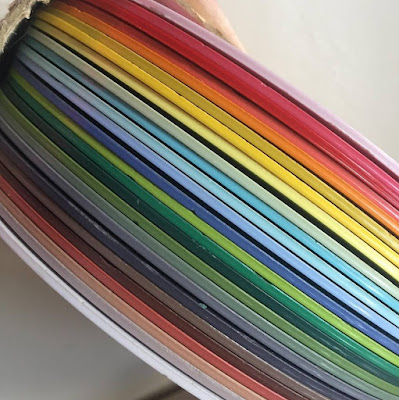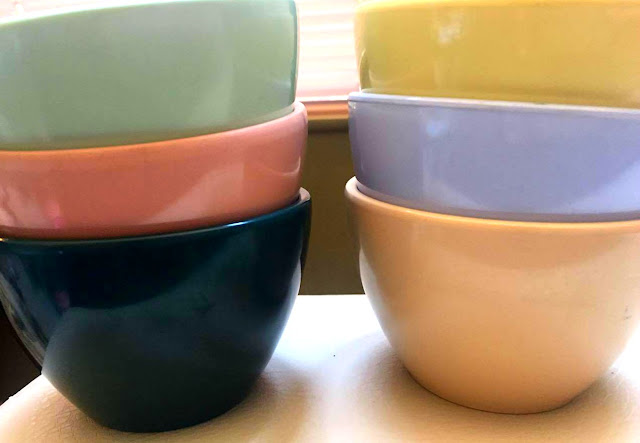1953 Plaskon Melmac Samples from my Collection
The colors of the rainbow, are sure to brighten any day. I often think that choosing a color palette or to limit my collection seems unlikely. I am going for the sunny and bright look and have still yet to unpack my melmac from my move from Baltimore to West Virginia. I have downsized my space from a 4 bedroom Victorian style home to a 1 bedroom cabin. It seems unlikely I will ever get room for my melmac unless I build an addition. Also, the heat in the West Virginia summer is not ideal for any plastics collection. I have decided recently to get rid of my Fiesta (urgh, this is great in the microwave, oven, and I make the best casseroles and pies in it) to redoing my kitchen in Italian dinnerware. I guess after time your tastes change and / or you get tired of the same old same old.
These are some plastic discs I acquired in my travels and are plastic Plaskon Melamine samples. If you note they are large discs about 6" around and flat, each labeled with the 1953 color name to them. They came in a box that says "House and Garden" and features the stacking colors you see in my banner. Ironically many of these colors strike me as basic colors of the rainbow.
Note the Meladur seems to match in dark green, but not in yellow...
Not all melmac coloration is the same....for instance when I first started collecting I remember assembling a set of pink at the thrift store. I would pick up this pink cup or that pink bowl here and there in my travels. None of the pinks matched and I started to think I was crazy or that someone washed them in the dishwasher a bit much. Unfortunately, some were just a teeny tiny shade or hue off. I later realized when in Syracuse studying Russel Wright that the plastic designers (and yes there were designers for the major melamine vintage lines) used to make custom colors, so their colors were just a bit off of the competitor. For instance Russel Wright used to add this or change that just to get that special turquoise color. As you can see from the photo above, some of the Meladur (Lapcor and General American) samples match the 1953 House and Garden colors but some are just a bit off.
I suppose you need to look for the rainbow.






















